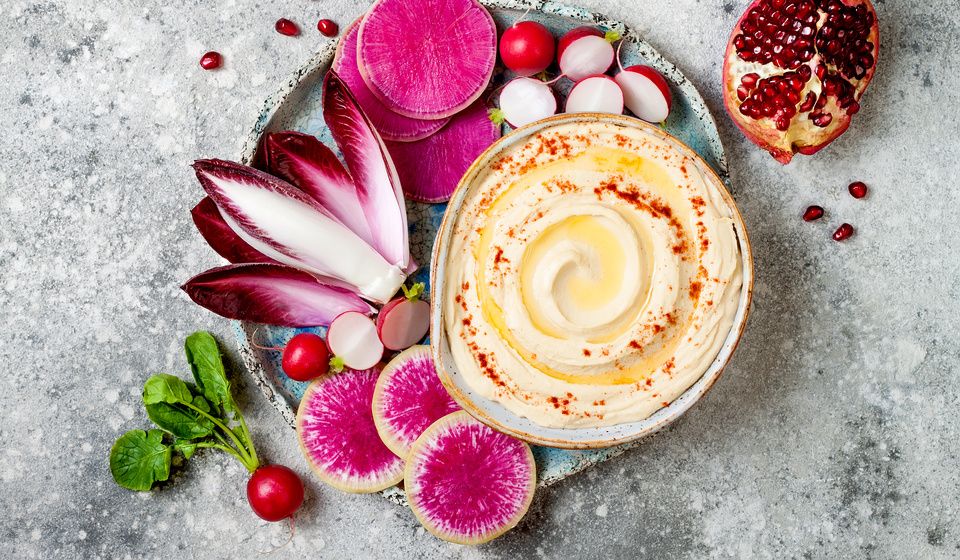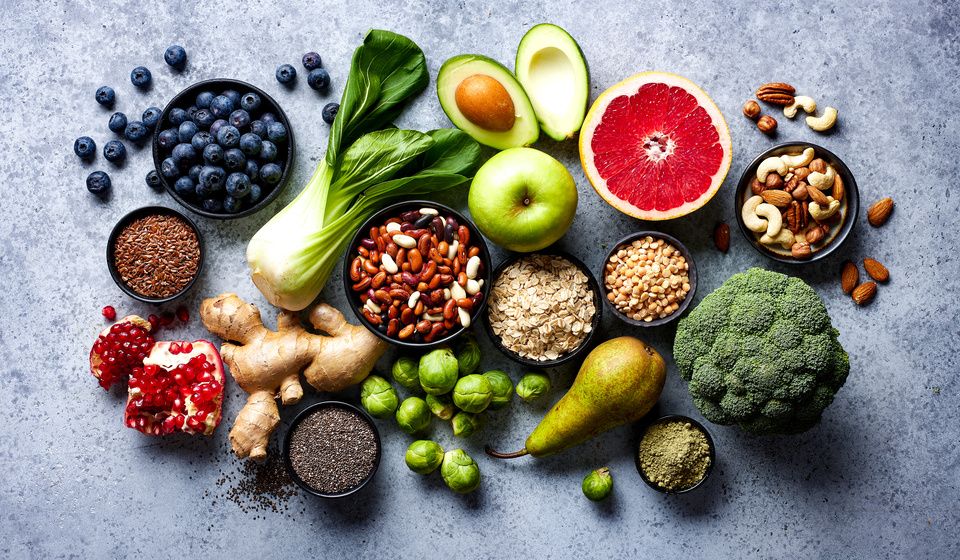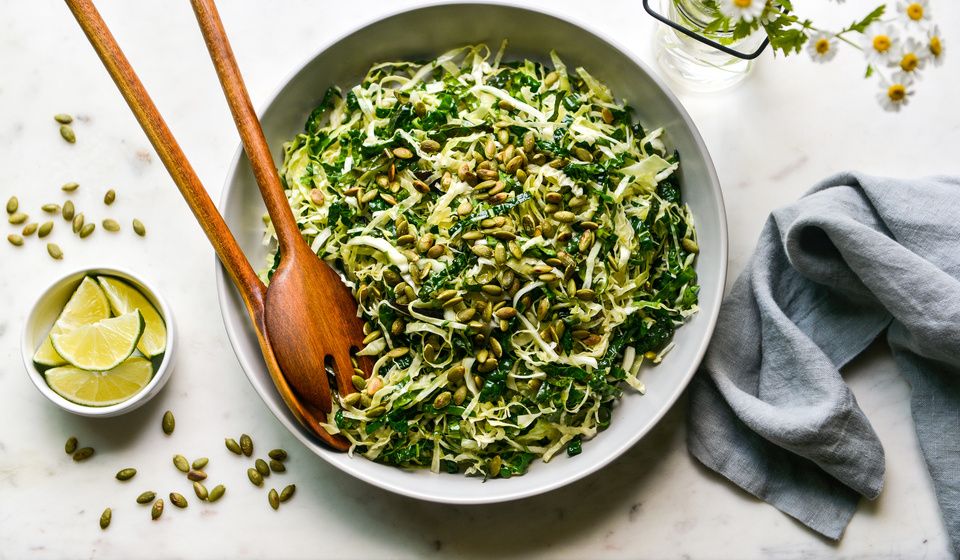The Magic of Magnesium: A Detox Mineral Your Body Can’t Live Without
Ali Segersten Jun 20, 2025
When we think of detox, we often picture green juices, infrared saunas, or herbal protocols. Daily detoxification certainly relies on many foundational elements such as phytonutrients from cruciferous vegetables, fiber to bind and eliminate toxins, and hydration to flush them through.
However, at the foundation of effective detoxification is magnesium—a key mineral that supports many of the body’s detox pathways.
Magnesium is one of the most abundant minerals in the human body and a cofactor in over 300 enzymatic reactions. It supports liver detoxification, hormonal balance, energy production, digestion, sleep, and nervous system regulation. Yet it’s also one of the most depleted nutrients in modern life.
You may feel stuck—fatigued, puffy, anxious, constipated, or emotionally off-center—even when you’re eating all the right foods. Daily detoxification requires us to replenish what's missing in order for the body to function optimally.
Magnesium is the mineral that supports energy production, helps maintain detoxification pathways, and contributes to overall balance and well-being. Without enough of it, detoxification slows, elimination stalls, and tension—both physical and emotional—gets held in the body. When magnesium is restored, everything starts to flow again.
Magnesium and Your Detoxification Pathways
Magnesium supports the body’s detoxification processes—especially through its roles in cellular energy production, antioxidant defense, and overall liver function. It supports healthy detoxification by assisting Phase II detoxification pathways and helping buffer oxidative stress generated during Phase I detoxification.
- Supports Phase II Conjugation Pathways: Magnesium plays a supportive role in detoxification by contributing to overall enzymatic function. Adequate magnesium is important for maintaining cellular health and supporting processes like methylation, sulfation, and glutathione production.
- Buffers Oxidative Stress: Magnesium supports mitochondrial health and helps regulate antioxidant systems—protecting cells from the oxidative stress that naturally arises during detoxification.
- Enhances Cellular Energy for Detox: As a cofactor in ATP synthesis, magnesium provides the energy needed for the body to process toxins, repair tissues, and maintain daily detoxification rhythms.
- Promotes Hormone and Estrogen Clearance: Magnesium supports liver function and methylation processes that are involved in the metabolism and clearance of estrogens and endocrine-disrupting chemicals.
📌 Did you know?
Estrogen dominance can worsen when magnesium is low, because your liver can’t clear it efficiently.
Magnesium’s Role in the Gut-Liver Axis
Detoxification doesn’t happen in isolation—it’s intimately connected to digestion. Magnesium supports this gut-liver connection by promoting digestive efficiency, protecting gut barrier integrity, and enabling healthy elimination—key processes that reduce the body’s toxic burden. The gut-liver axis relies on magnesium in several ways:
- Healthy Elimination: Magnesium promotes smooth muscle function and peristalsis, helping to prevent constipation and the reabsorption of toxins in the colon.
- Gut Barrier Integrity: Magnesium helps maintain tight junctions in the intestinal lining, protecting against permeability ("leaky gut"). This helps reduce the translocation of inflammatory molecules like lipopolysaccharide (LPS), which can strain the liver and contribute to systemic inflammation.
- Stomach Acid Secretion: Magnesium is required for the ATP-dependent proton pumps in parietal cells that drive gastric acid secretion. This makes it critical for optimal digestion, nutrient absorption, and gut microbiome balance.
- Pancreatic Enzyme Secretion: Magnesium plays a vital role in pancreatic enzyme secretion by activating ATP, the energy molecule needed for the release of digestive enzymes. Without adequate magnesium, ATP cannot function properly, impairing the breakdown and absorption of nutrients.
Signs of Magnesium Insufficiency
Magnesium is involved in hundreds of processes throughout the body—yet most people fall short of meeting their daily magnesium needs. When your levels are low, both physical and emotional symptoms can begin to surface.
- Headaches or migraines
- Muscle cramps, spasms, or twitching
- Blood sugar swings, carb cravings, or feeling shaky between meals
- Restless leg syndrome (especially at night)
- Insomnia or poor sleep quality
- Anxiety, irritability, or emotional volatility
- Constipation or sluggish bowels
- Fatigue, even with a clean, nutrient-dense diet
- Increased sensitivity to stress or overstimulation
- Signs of sluggish detox, such as skin issues or chemical sensitivity
These are subtle signs that your body may be depleted and in need of deeper nourishment.
Magnesium and Emotional Detox
Magnesium isn’t just physical—it plays a profound role in emotional regulation, brain health, and nervous system balance.
- HPA Axis Modulation: Magnesium helps buffer the effects of chronic stress by regulating the hypothalamic-pituitary-adrenal (HPA) axis and lowering cortisol levels. It also supports adrenal resilience and protects against the systemic inflammation that often accompanies emotional burnout.
- Calm Brain Chemistry: Magnesium works alongside vitamin B6 (P5P) and taurine to support healthy GABA signaling and nervous system regulation. It helps reduce excitatory brain activity, soothe emotional reactivity, and promote a sense of calm.
- Trauma Release + Nervous System Reset: Magnesium supports muscle relaxation and softens the tension held in fascia and tissues—making it easier to physically release stress that the body has stored. By supporting a calmer baseline in the nervous system, it helps create the internal conditions needed for rest, emotional processing, and integration.
Blood Sugar and Insulin Sensitivity
Magnesium is essential for carbohydrate metabolism, insulin signaling, and glucose uptake into cells. Research shows that low magnesium levels are associated with insulin resistance, impaired glucose tolerance, and an increased risk of type 2 diabetes. By supporting insulin receptor activity and helping stabilize blood sugar, magnesium can contribute to steady energy levels and reduce cravings throughout the day.
Magnesium malate, in particular, supports mitochondrial energy production and may be especially beneficial for those experiencing blood sugar fluctuations or metabolic fatigue.
How to Rebuild Magnesium Reserves
Replenishing magnesium begins with consistency. Food provides the foundation, offering not only magnesium, but also a spectrum of minerals, vitamins, protein, and phytonutrients that work synergistically to support detoxification and whole-body healing.
At the same time, supplementation is often necessary, especially during times of stress, healing, or depletion. Together, food and targeted support can help you restore what your body needs to function with ease.
Even small additions—a spoonful of chia seeds, a handful of pumpkin seeds, a cup of black beans—can begin to shift your body toward balance.
Below you’ll find a breakdown of the top magnesium-rich foods to support your detox pathways, hormonal rhythm, and nervous system resilience.
Many of our Nourishing Meals® recipes feature magnesium-rich ingredients. Just type any magnesium-rich food into the Ingredient Search box to explore recipes that support your detox pathways and daily mineral needs.
One way I’ve found helpful in maintaining my own magnesium levels—beyond magnesium-rich meals—is keeping a bottle of magnesium glycinate by my bed. Each night before sleep, I take it alongside vitamin B6 in its active P5P form to support relaxation, nervous system balance, and replenishment while I rest.
Top Magnesium-Rich Foods to Support Daily Detox
Magnesium is abundant in whole, nutrient-dense foods—especially seeds, leafy greens, legumes, and certain types of seafood. Food is the most nourishing, sustainable way to maintain your magnesium stores.
Plant-Based Sources
- Pumpkin seeds (¼ cup): 190 mg
- Chia seeds (2 Tbsp): 180 mg
- Sunflower seeds, raw (¼ cup): 120 mg
- Swiss chard, cooked (1 cup): 150 mg
- Cooked black beans (1 cup): 120 mg
- Cooked quinoa (1 cup): 120 mg
- Almonds (¼ cup): 97 mg
- Blanched almond flour (¼ cup): ~90–95 mg
- Cashews (¼ cup): 89 mg
- Avocado (1 medium): 58 mg
- Rolled oats, dry (½ cup): 55 mg
- Brown rice, cooked (½ cup): 42 mg
- Banana (1 medium): 32 mg
Seafood + Animal-Based Sources
- Halibut (3 oz): 91 mg
- Mackerel (3 oz): 82 mg
- Oysters (3 oz): 49 mg
- Crab (3 oz): 43 mg
- Shrimp or scallops (3 oz): ~26–28 mg
- Chicken, turkey, or beef (3 oz): ~20–25 mg
- Egg, cooked (1 large): 6 mg
Dairy-Based Sources
- Greek yogurt, whole milk (¾ cup): 22 mg
- Cottage cheese, low-fat (¾ cup): 18 mg
- Goat cheese, soft (1 oz): 15 mg
These foods are easy to integrate into meals, whether you're making soups, smoothies, bowls, or snacks. Pairing magnesium-rich foods with fiber, greens, and hydration multiplies their benefits.
What About Oxalates in Magnesium-Rich Foods?
Many plant-based sources of magnesium—like spinach, chard, almonds, and cashews—also contain oxalates, naturally occurring compounds that can bind to minerals like magnesium and calcium in the gut. In some individuals—especially those with a history of kidney stones, chronic inflammation, or oxalate sensitivity—this can contribute to symptoms or impair mineral absorption.
But here’s what’s important to know:
- Magnesium actually helps bind oxalates in the gut, preventing their absorption and supporting safe excretion. This is protective—not harmful—for most people.
- Boiling high-oxalate foods, such as spinach or Swiss chard, significantly reduces their oxalate content.
If you're actively managing oxalate sensitivity, focus on low-oxalate, magnesium-rich options, such as:
- Pumpkin seeds
- Chia seeds
- Sunflower seeds
- Avocados
- Mineral-rich broths
- Wild salmon, halibut, or mackerel (and other animal-based foods)
A well-balanced diet that includes adequate hydration, calcium, and gut support can help regulate oxalate metabolism naturally over time.
When Supplements Are Needed—and Which One to Choose
While food is the foundation, oftentimes supplementation is necessary—especially during times of stress, transition, or healing.
Forms to Look For
- Magnesium glycinate – calming, gentle on digestion, ideal for anxiety and sleep
- Magnesium citrate – helpful for constipation and mild laxative effect
- Magnesium malate – supports energy production, good for fatigue
- Magnesium threonate – crosses the blood-brain barrier; supports cognitive health
When to Take It
- Evening is ideal for relaxation and sleep support.
- Morning doses can help energy if taken in energizing forms like malate.
Dosage
- Typical range: 200–600 mg/day, though needs vary. Always consult your practitioner for individualized dosing.
Absorption Tips
- Avoid taking magnesium with calcium or iron.
- Topical options like epsom salt baths or sprays can bypass digestion.
Download the Magnesium Food & Supplement Guide
Looking for a beautiful, science-backed resource you can keep in your kitchen? This free Magnesium Guide highlights the most potent food sources—and helps you understand how to rebuild your reserves with clarity and ease.
Inside, you’ll find:
- A categorized list of magnesium-rich foods with serving sizes and milligram amounts
- A comparison of common magnesium supplement forms and when each might be helpful
- A clean, visual layout that makes daily nourishment easier to remember and prioritize
Print it, post it, or pass it along—it’s a supportive guide for restoring balance, one nourishing choice at a time.

Magnesium: Your Body’s Safety Net for Detox and Deep Healing
Magnesium is one essential piece of your body’s natural rhythm of detoxification and renewal. It’s the mineral of calm, of release, and of inner resilience. When you nourish your body with it—through food and supplementation—you support the full arc of detox: from activation to elimination to integration.
This is why replenishing magnesium isn’t optional—it’s foundational. Before you ask your body to let go of stored toxins, it must first feel safe. A magnesium-replete state provides that safety net—buffering the oxidative burden, protecting your cells, and supporting the deeper healing that detoxification can offer.
Keep Going on Your Detox Journey
Gift #6: Add in Detoxification Supportive Foods and Practices →
Explore this month’s theme in the 12 Gifts of Health series—what to remove, what to replenish, and how to restore your body’s balance from within.
How to Do a Detoxification Diet and Why →
Understand the science behind gentle, food-first detoxification—and why it’s about nourishment, not deprivation.
Crucifers and Sulforaphane: Nature’s Most Powerful Detox Activators (plus free PDF) →
Discover how broccoli, kale, arugula, and other crucifers help activate cellular cleansing and antioxidant protection.
Fiber: The Forgotten Detoxifier (plus free PDF) →
Learn how fiber binds toxins, supports hormone balance, and fuels your microbiome to keep detox flowing smoothly every day.
Hydration: The Foundation of Detox →
Learn how water, minerals, and electrolytes support daily detox through the kidneys, lymph, skin, and bowels.
Download the Magnesium & Supplement Food Guide PDF →
Get inspired with a beautifully designed guide featuring magnesium-rich foods, meal ideas, and supplement tips to restore your reserves.

About the Author
Alissa Segersten, MS, CN
Alissa Segersten, MS, CN, is the founder of Nourishing Meals®, an online meal-planning membership with over 1,800 nourishing recipes and tools to support dietary change and better health. As a functional nutritionist, professional recipe developer, and author of The Whole Life Nutrition Cookbook, Nourishing Meals, and co-author of The Elimination Diet, she helps people overcome health challenges through food. A mother of five, Alissa understands the importance of creating nutrient-dense meals for the whole family. Rooted in science and deep nourishment, her work makes healthy eating accessible, empowering thousands to transform their well-being through food.Nourishing Meals Newsletter
Email updates.






Add Comment